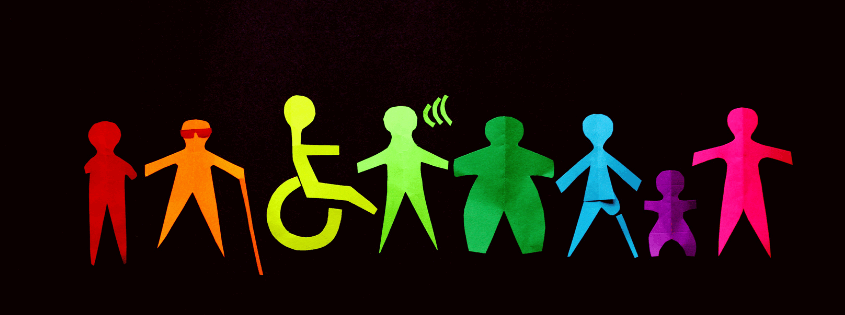Interrupting Ableism in the Arts Sector: Part 3 – Building an Accessible Future in the Arts
Building an Accessible Future in the Arts
This is the third of three articles in the series Interrupting Ableism by Deb Nyczai. This edition focuses on the cost of exclusion. The first, Interrupting Ableism in the Arts can be found here. The second on the Cost of Exclusion, here.
In the first two parts of this series, we examined how ableism manifests in the arts sector and the profound cost of exclusion—not just for disabled artists and audiences, but for the vitality and sustainability of the arts as a whole. Building on that foundation, this final part explores what it takes to create an arts sector where accessibility is not an afterthought but a foundational principle.
Tangible Solutions for Arts Organizations, Funders, and Policymakers
Creating an accessible arts sector requires intentional, systemic change. Stakeholders across the sector can take the following key actions:
1. Integrate Accessibility from the Outset
- Accessible Venues: Ensure physical spaces are navigable for all, with features like ramps, elevators, and accessible seating.
- Inclusive Performances: Offer captioning, sign language interpretation, audio description, and sensory-friendly options.
- Accessible Materials: Provide programs, websites, and promotional content in formats usable by everyone, including Braille, large print, and screen-reader compatible digital formats.
2. Allocate Dedicated Resources for Accessibility
- Funding Structures: Include accessibility costs as eligible expenses in grants and funding programs.
- Support for Disabled Artists: Provide resources for adaptive equipment, personal support workers, and other necessary accommodations.
3. Prioritize Disability-Led Organizations
- Leadership Roles: Ensure disabled voices are represented in decision-making positions within arts organizations.
- Support Disability-Led Initiatives: Invest in programs and organizations that center disabled experiences and leadership.
Highlighting Successful Models of Accessibility
Listen to Dis’ Community Arts Organization Inc. (LTD)
Based in Regina, Saskatchewan, LTD is the province’s first and only disability-led arts organization, boldly centering disabled voices and experiences at the heart of its creative and community work. LTD transforms the arts landscape by rejecting tokenism and embedding access, agency, and equity as foundational pillars in every project. Through innovative performances, workshops, and arts programming, LTD not only creates space for disabled artists to thrive but also challenges conventional narratives and practices in the sector. With a steadfast commitment to adaptive supports, meaningful community consultation, and equitable compensation, LTD models how disability-led leadership can revolutionize artistic expression, amplify underrepresented perspectives, and foster truly inclusive cultural ecosystems.
Stratford Festival, Stratford, Ontario
The Stratford Festival offers a wide range of accessible performances, including audio-described shows for blind and low-vision audiences, ASL-interpreted performances for Deaf patrons, and relaxed performances designed to accommodate various sensory needs. Their commitment is supported by compliance with the Accessibility for Ontarians with Disabilities Act (AODA) and a robust accessibility policy that ensures dignified, timely, and inclusive experiences for all patrons. Features include wireless hearing assistance devices, magnifying sheets, Braille programs, accessible seating and washrooms, as well as support for service animals and support persons.
National Theatre, London, UK
The National Theatre in the UK provides extensive accessibility services such as infra-red hearing enhancement systems, hearing loops in select theatres, and smart caption glasses that display captions on lenses during performances. They welcome assistance animals and provide flexible options for patrons with special needs. Their digital platform, National Theatre at Home, also offers captioned and audio-described streaming productions to expand access beyond physical attendance.
The Role of Allies and Advocacy in Systemic Change
- Amplify Disabled Voices: Use your platforms to highlight the work and perspectives of disabled artists.
- Advocate for Inclusive Policies: Push for policies that prioritize accessibility and inclusion within your organizations and communities.
- Educate Yourself and Others: Engage in ongoing learning about disability culture, accessibility best practices, and the systemic barriers faced by disabled individuals.
Call to Action
- For Arts Organizations: Audit your current practices, identify areas for improvement, and implement accessibility measures across all facets of your operations.
- For Funders and Policymakers: Ensure that funding criteria and policies explicitly support accessibility initiatives and prioritize disability-led organizations.
- For Individuals: Support accessible arts events, advocate for inclusive practices in your communities, and continue educating yourself on disability issues.
Accessibility is not a luxury—it’s a fundamental aspect of equity and inclusion. By embedding accessibility into the very fabric of the arts, we enrich our cultural landscape and ensure that the arts truly reflect the diversity of human experience.


